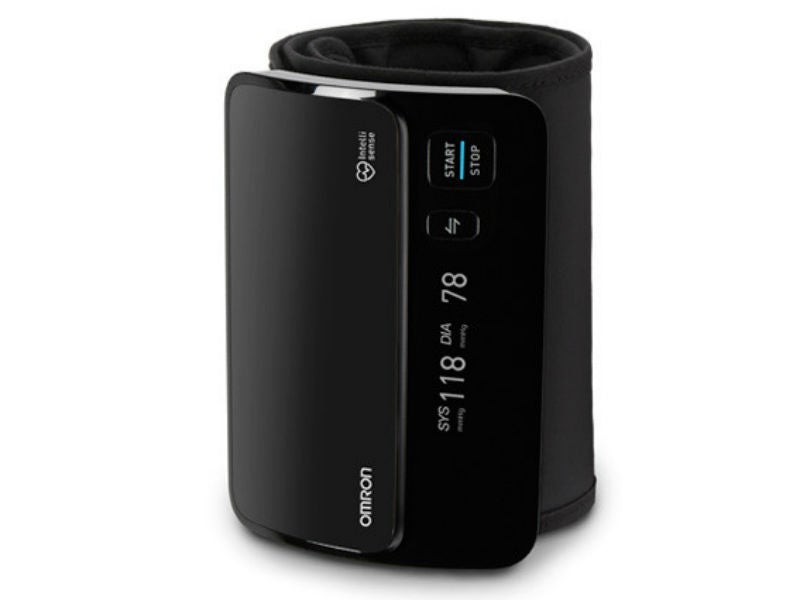
In the US and UK, February is National Heart Month, which exists to raise awareness of the risks and consequences of coronary heart disease, which affects 2.6 million people in the UK alone. High blood pressure is a major risk factor for a number of deadly conditions affecting the heart and blood vessels, from cardiac arrest and heart failure to stroke and damaged arteries.
As such, the medical technology sector is busily developing increasingly smart blood pressure monitoring devices for hypertension patients, especially those with exacerbating long-term conditions such as diabetes. Here, Omron Healthcare UK general manager Charlie Fox discusses the challenges and opportunities in the blood pressure monitoring market, as well as the company’s latest monitoring technology. Could new blood pressure monitoring technology be the future of diabetes treatment?
Charlotte Edwards: Tell me a bit about Omron and the company’s relationship with blood pressure monitoring?
Charlie Fox: Omron is a company that has been running for just over 80 years and we make automation equipment. In the early 70s we launched the first automatic blood pressure monitor because the company realised that it really wanted to get into healthcare. So over the last 50 years we’ve been very strong in blood pressure monitoring in particular as well as other healthcare categories. What we’ve really been trying to do since the early 70s is help people manage their blood pressure at home but we’ve also given doctors access to that equipment.
Initially we launched things for doctors to use in the early 70s but for the last 30 years or so Omron has really been used for home healthcare so people can monitor their blood pressure at home really easily. That’s one of the great strengths of Omron.
The way our devices have been designed is with a one-button use. You put it on your upper arm, which is the gold standard in the UK for blood pressure monitoring. Once you’ve got it on your upper arm and hit the button you can get a blood pressure reading and then it takes between 30 seconds and a minute and then you will then get a reading very easily.
How well do you really know your competitors?
Access the most comprehensive Company Profiles on the market, powered by GlobalData. Save hours of research. Gain competitive edge.

Thank you!
Your download email will arrive shortly
Not ready to buy yet? Download a free sample
We are confident about the unique quality of our Company Profiles. However, we want you to make the most beneficial decision for your business, so we offer a free sample that you can download by submitting the below form
By GlobalDataCE: How do your devices help diabetes patients monitor their blood pressure?
CF: There are so many challenges. The first is making sure people are aware of hypertension in the first place. So there is still some confusion about high blood pressure and if it means you need a blood test or if you need to look at your cholesterol. Generally, when you talk to patients and consumers about high blood pressure, they do have confusion about it.
The second element is making sure that it’s accurate and traditionally measuring diabetics has been a difficult subgroup to manage. Diabetes can lead to the hardening of the arteries. This can make it very difficult to get an accurate read of someone’s upper arm when you’re taking their blood pressure.
Two key things for Omron are ease of use but also accuracy. With regards to accuracy, we’ve really had a recent breakthrough in marketing this to the diabetic population so we can now offer our new Omron M7 Intelli IT, which will allow us to measure diabetic patients. It’s clinically validated for use in diabetic patients and enables accurate and reliable home monitoring of their blood pressure.
If you leave hypertension untreated it can lead to lots of very serious conditions. According to the International Society of Hypertension, high blood pressure is the number one contributing risk factor for global deaths and 10 million people die unnecessarily every year due to untreated or undiagnosed raised blood pressure and that is even more acute with diabetics.
CE: How do you expect blood pressure monitoring technology to evolve in the future?
CF: There has been quite a lot of technical change over the last few years and we have seen some innovation with our products, specifically with Evolve. Evolve is an all-in-one blood pressure monitor, a one-piece device, which you can use on the go. It also incorporates something called an Intelli Wrap Cuff so whatever position you put the cuff on your upper arm you can get an accurate read.
I think the key thing in terms of the future is really about data, so the ability of the patient to talk to their GP. I think the devices can always get easier to use. Omron Evolve has fewer parts to put together so makes life a lot easier. I think devices will get thinner, quicker to use; there are all sorts of innovations potentially in the future.
CE: How can preventative digital technology play a role in reducing acute suffering?
CF: These devices help healthcare where there is a resourcing or staff challenge. Because there are sometimes not enough resources to look after the patient population, technology can help to fill some of that gap.
Treating diabetes requires a comprehensive approach which is about going beyond monitoring. It’s really about the relationship between the patient and their doctor and making sure that hypertension monitoring becomes part of a regular routine for diabetics. That means patients can see progress over time, and they can talk to their GP if they have any episodes where there blood pressure is increasing.
This way patients and doctors can reshape the way they work together and improve communications. The ability to transfer data from the machine to the GP makes life much easier.







